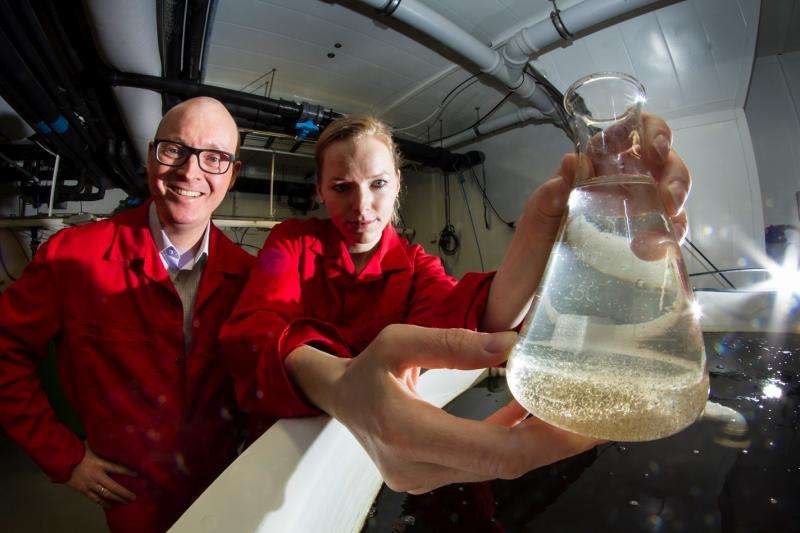Food factory for baby fish is first of its kind

Norwegian company C-Feed builds world's first industrial plant for copepods – a fish-fry feed for the production of ballan wrasse, tuna, halibut and other marine species.
Unique technology from SINTEF, NOK 13 million in fresh capital and an annual market potential of NOK 2 billion are the ingredients of the new factory which is located outside Trondheim in Norway.
C-Feed, a spin-off from SINTEF which is Scandinavia's largest independent research organisation, has so far produced copepods on a small scale in Trondheim. When the new plant opens in the autumn, the company will start by increasing its production by a factor of ten.
Feed for baby fish
The tiny crustaceans will be used as live feed for fry of ballan wrasse, tuna, lobster, halibut and other marine species. Many companies and researchers across the world have tried without success to cultivate new species, and it is often the fry stage that has been the problem, because a large proportion of the young fish die during this early phase of production.
"Until now, cultivating tuna has been an extremely demanding, not to say impossible, process. Our copepods have turned out to be very suitable as baby food for fry, and we believe that tuna could represent a major market for us, since tuna are in great demand with sushi enthusiasts all over the world," says C-Feed CEO Rune Bjerke.
The copepods are also very likely to revolutionise the cultivation of well-known farmed species such as halibut, lobster and ballan wrasse.
Ready to fight plagues of lice
Bjerke points to ballan wrasse cultivation as having great market potential, particularly in Norway. Wrasse are in demand because they eat lice that live on the skin of salmon held in fish-cages, and are therefore among the most effective methods of combatting plagues of lice. "The production of fish-feed for ballan wrasse farmers could become our largest market in Norway," says Bjerke.
C-Feed has now attracted NOK 13 million from new investors, existing shareholders and Innovation Norway. The extra capital will be used to build and operate a new factory in Vanvikan outside Trondheim, which will enable production to be increased by a factor of ten compared to the company's present site. The capacity of the new plant will be capable of being further increased by a factor of four.
"We are greatly looking forward to making the jump from small-scale production to the industrialisation of copepod cultivation," says Bjerke.
The company has already started small-scale exports to customers in several European countries, and expects that its turnover will be in the region of NOK 10 million in the first full year of operation of the new plant.
Provided by SINTEF












.jpg)
.jpg)
.jpg)
.jpg)





